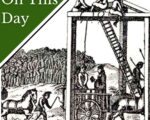
On this day in Tudor history, 7th March 1544, in the reign of King Henry VIII, Germaine (or German) Gardiner and priest John Larke were executed for denying the royal supremacy.
[Read More...]
On this day in Tudor history, 7th March 1544, in the reign of King Henry VIII, Germaine (or German) Gardiner and priest John Larke were executed for denying the royal supremacy.
[Read More...]
On this day in Tudor history, 6th March 1547, in the reign of King Edward VI, former Lord Chancellor to Henry VIII, Thomas Wriothesley, 1st Earl of Southampton, lost the Great Seal of his Lord Chancellorship and was confined to his home at Ely Place for abusing his authority.
Wriothesley was found guilty of issuing a commission without the knowledge or permission of the other executors of Henry VIII’s will, but it was probably more to do with his opposition to Edward Seymour, Duke of Somerset, becoming Lord Protector.
[Read More...]
On this day in Tudor history, 5th March 1575, in the reign of Queen Elizabeth I, mathematician William Oughtred was baptised at Eton College, where his father, Benjamin, was registrar and writing master.
Oughtred is responsible for developing a straight slide-rule, a gauging rod and various sundials. He also introduced the “×” symbol for multiplication and the abbreviations “sin” and “cos” for the sine and cosine functions.
Let me tell you a bit more about him…
[Read More...]
On this day in Tudor history, 4th March 1526, in the reign of King Henry VIII, courtier and administrator, Henry Carey, 1st Baron Hunsdon, was born.
Hunsdon was the only son of Mary Boleyn and her first husband, William Carey, esquire of the body to Henry VIII. There is controversy over his paternity due to Mary Boleyn having a sexual relationship with Henry VIII at some point…
[Read More...]
On this day in Tudor history, 3rd March 1528, in the reign of King Henry VIII, Margaret Tudor, sister of Henry VIII and widow of King James IV of Scotland, married for a third time.
Thirty-eight-year-old Margaret’s third husband was Henry Stewart, who was about 33. Stewart was the son of Andrew Stewart, 1st Lord Avondale, and he’d served Margaret’s son, James V, as master carver and master of the artillery. It is thought that he and Margaret got to know each other in 1524.
[Read More...]
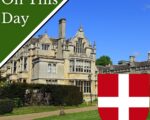
On this day in Tudor history, 1st March 1559, in the reign of Queen Elizabeth I, Catholic politician and landowner, Sir Thomas Tresham, died at Rushton in Northamptonshire. He was buried at St Peter’s Church, Rushton.
Tresham was a leading politician in the reigns of Henry VIII and Mary I, and he’s an interesting Tudor chap.
Let me tell you a bit more about him…
[Read More...]
Thank you to author and historian Toni Mount for stopping by the Tudor Society on the book/blog tour for her new book, “The Colour of Bone”, the eleventh novel in the Seb Foxley medieval murder mystery series.
Toni has answered some interview questions…
[Read More...]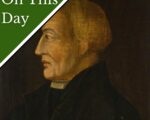
During the night of 28th February/1st March 1551, theologian and Protestant reformer Martin Bucer died in Cambridge. He was fifty-nine years old.
Let me tell tell you a bit more about this reformer, who ended up being posthumously burned as a heretic in Mary I’s reign!
[Read More...]
Support for the needy in England through Tudor poor laws was based upon a carrot-and-stick approach. Specific policies were designed to provide relief for the poor, while others were designed to penalise. Tony Morgan writes about some of the approaches used in the Tudor period.
[Read More...]
On this day in Tudor history, 27th February 1583, in the reign of Queen Elizabeth I, thirty-six-year-old diarist and Church of England clergyman, Richard Madox, died near Espirito Santo harbour, near Vitória, Brazil.
Madox served as chaplain and secretary to Captain Edward Fenton on his 1582 voyage to the Moluccas and China.
[Read More...]
On this day in Tudor history, 26th February 1548, in the reign of King Edward VI, George Carey, 2nd Baron Hunsdon, was born. He was the eldest son of Henry Carey, 1st Baron Hunsdon, and Anne Morgan, and the grandson of Mary Boleyn.
[Read More...]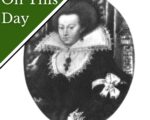
On either 24th or 25th February 1618, sixty-five-year-old literary patron Elizabeth Carey (née Spencer), Lady Hunsdon, wife of Sir George Carey, 2nd Baron Hunsdon, died from what was described “a palsie”, probably a stroke. She was buried at Westminster Abbey, in the Hunsdon family vault.
[Read More...]
On this day in Tudor history, 24th February 1540, in the reign of King Henry VIII, courtier, author and administrator, Henry Howard, Earl of Northampton, was born at Shottesham in Norfolk.
Northampton was the second son of courtier and poet Henry Howard, Earl of Surrey, and his wife, Lady Frances de Vere.
Let me give you a few facts about this Tudor earl…
[Read More...]
On this day in Tudor history, 23rd February 1503, Elizabeth of York, Queen Consort of Henry VII and mother of Henry VIII, was laid to rest at Westminster Abbey.
Elizabeth had died on her 37th birthday, on 11th February, at the Tower of London, nine days after giving birth to a daughter, Katherine, who also died.
In “The Last Medieval Queens: English Queenship 1445-1503”, J L Laynesmith writes of how at least £3,000 was spent on Elizabeth’s funeral, compared to the £600 spent on that of Arthur, Prince of Wales, the previous year, and that “the whole process was rich with references to the queen’s coronation”.
[Read More...]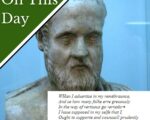
On this day in Tudor history, 22nd February 1571, in the reign of Queen Elizabeth I, translator John Bury died.
Bury was only about thirty-five years old at his death, but he’d suffered a fall from his horse six months earlier. Bury had broken his leg in the accident, a serious injury in those days and one which led to his death.
[Read More...]
On this day in Tudor history, 21st February 1568, Katherine Seymour (née Grey), Countess of Hertford, was buried at Yoxford. Her remains were later re-interred, by her grandson, in the Seymour family tomb at Salisbury Cathedral.
Katherine was the second daughter of Henry Grey, Duke of Suffolk, and his wife, Frances Brandon, and the granddaughter of Charles Brandon, Duke of Suffolk, and Mary Tudor, Queen of France. She was also the younger sister of Lady Jane Grey, or Queen Jane.
[Read More...]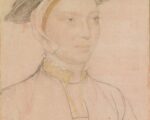
On this day in Tudor history, 20th February 1552, Anne Herbert, Countess of Pembroke, died at Baynard’s Castle in London.
Anne was the younger sister of Queen Catherine Parr and served Queens Anne Boleyn, Jane Seymour, Anne of Cleves and Catherine Howard.
Let me give you a few facts about this Tudor countess…
[Read More...]
On this day in Tudor history, 19th February 1567, in the reign of Queen Elizabeth I, Margaret Douglas, Countess of Lennox, was informed of the murder of her son, Henry Stewart, Lord Darnley.
Darnley had been murdered nine days earlier at Kirk o’ Field, Edinburgh, in the Royal Mile, just a few hundred yards from Holyrood House where his wife, Mary Queen of Scots, and baby son, the future James VI/I, were staying.
[Read More...]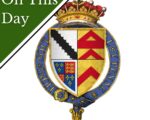
On this day in Tudor history, 17th February 1557, Henry Radcliffe, 2nd Earl of Sussex, died at Cannon Row in Westminster. He was buried firstly at St Laurence Pountney and then moved to Boreham in Essex.
Sussex, who was about 50 at his death, was the son of courtier and soldier Robert Radcliffe, 1st Earl of Sussex. He accompanied the king and Anne Boleyn on their 1532 Calais visit and was made a Knight of the Bath in the celebrations for Anne’s coronation in 1533. He commanded men under the Duke of Norfolk in Henry VIII’s French campaign in 1544 and was lord sewer at Edward VI’s coronation in 1547.
[Read More...]
On 16th February 1497, German humanist, reformer and scholar, Philipp Melancthon, was born at Bretten in Germany.
Elizabeth I was said to have memorised his 1521 work “Loci Communes”.
Here are a few facts about this famous reformer
[Read More...]
On this day in Tudor history, 15 February 1503, Henry Deane, administrator and Archbishop of Canterbury, died at Lambeth Palace at around the age of 63. He was laid to rest at Canterbury Cathedral in a lavish funeral.
Deane was the last monk to become Archbishop of Canterbury.
Let me give you a few facts about this archbishop…
[Read More...]
On this day in Tudor history, 14th February 1492, in the reign of King Henry VII, magnate William Berkeley, Marquis of Berkeley, died. He was buried in the Augustinian friary in London with his second wife, Joan.
Berkeley is known for his involvement in the 1470 Battle of Nibley Green, the last English battle fought between private armies of feudal magnates.
[Read More...]
On this day in Tudor history, 13th February 1564, in the reign of Queen Elizabeth I, astrologer and physician John Harvey was baptised at Saffron Walden in Essex.
Harvey was the third son of farmer and rope maker John Harvey and his wife, Alice. His brothers were renowned scholar Gabriel Harvey and astrologer and theologian Richard Harvey.
[Read More...]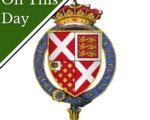
On this day in Tudor history, 10th February 1564, in the reign of Queen Elizabeth I, Henry Neville, 5th Earl of Westmorland, died at Kelvedon in Essex.
Neville was born in around 1524/1525 and was the eldest son of Ralph Neville, 4th Earl of Westmorland, and his wife, Catherine Stafford. His maternal grandfather was Edward Stafford, 3rd Duke of Buckingham.
[Read More...]
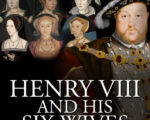
Historian Claire Ridgway’s next online event, Henry VIII and His Six Wives, is open for registration with an early bird discount coupon!
Register now and join Claire, Dr Tracy Borman, Dr Linda Porter, Gareth Russell, Dr Owen Emmerson and Kate McCaffrey as they delve into the lives of this iconic king and his six queens consort.
Henry VIII and His Six Wives is a completely online event and its starts properly on 22nd May 2023. However, Claire is hosting zoom video calls twice a month leading up to the event so participants can get to know each other and talk Tudor. The zoom calls start on 12th February and the topic for discussion is Henry VIII in film and on TV.
[Read More...]
This day in Tudor history, 9th February 1554, in the reign of Queen Mary I, was one of the dates set for the execution of Lady Jane Grey, the former Queen Jane, but she was granted a three-day reprieve.
Why and what had happened between her trial in November 1553, when she had been condemned to death, and this day?
Let me tell you…
[Read More...]